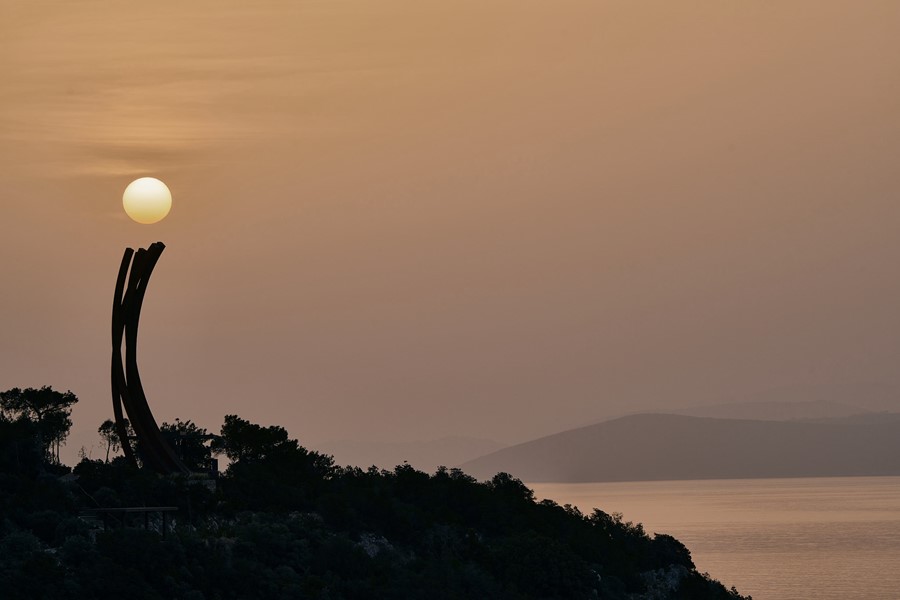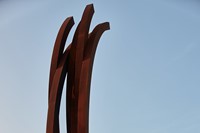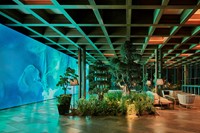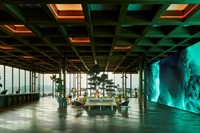At the Maxx Royal Bodrum, up-and-comers and superstars from the art world converge by the sea for the hotel’s first art weekend
“Imagine AI can capture dreams.” Turkish artist Refik Anadol, known for his surreal and thoughtful art made using machine intelligence, sits with the Aegean Sea behind him, the calm waters of the bay lapping in a soothing manner at the rocks below us. It’s the ocean that has inspired his latest work – apt for an artist who’s explored things unknowable and organic in his work, from the relationship between the people of the Amazon and the natural world surrounding them to the vital role of corals in our seas. The huge digital piece Anadol created for this site sits just up the hill, in an expansive and zen area of the new Maxx Royal Bodrum Resort. It’s a starring part of the hotel’s first arts weekend, which saw collectors and enthusiasts descend from around the world to celebrate artists both far-flung and homegrown. The first initiative of its kind in Bodrum, the secluded and glamorous Turkish peninsula, it’s designed to put the hotel, which surrounds its very own sheltered bay, on the map for the international art crowd.
It’s ocean waves (although not this bay, which is very much not full of waves) that inform the huge digital piece he’s produced for the site. The work, Pacific Ocean, sits just up the hill, in the lobby of the hotel. Anadol, whose work Unsupervised - Machine Hallucinations - MoMA (2022), is in MoMA’s permanent collection, lives and works in Los Angeles, but hails from Istanbul. He was lured in part by art advisor Zeynep Utku, a Central St Martins graduate who founded Arts Connected, which, as one might imagine, connects artists to exciting large-scale projects. “I've been trying to work with Refik for years,” says Utku. “We felt he could do something here that married art, technology and the location."
Nature pervades the work showing at the hotel’s first art week, from pieces by Sang Woo Kim and Chloe Wise in the gallery space, to Anadol’s serene AI undulations, and the monumental sculptures of Bernar Venet, which crown the entrance to the bay. Venet’s huge works in iron arch towards each other like an unfinished circle erupting from the earth, reaching toward the Turkish sky. The 83-year-old Venet, who lives and works in the South of France, cuts the figure you might expect, in white linen and a windswept halo of white hair. What he has to say is even more fabulous, laughing, “This took me an hour to concept, a few hours to make the maquette, two and a half months to build, a week to put up – but 50 years to be me!”
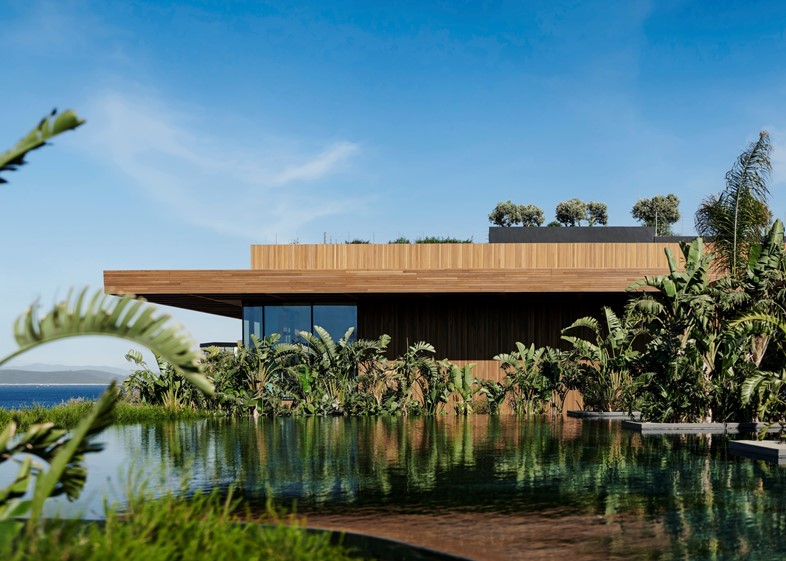
Venet’s classicism and works in hunks of oxidised metals (“My sculpture garden has works by Anish Kapoor and Donald Judd – I built my collection through friendship”) are a piquant counterpart to Anadol’s merging of the meta and marvels of nature. Pacific Ocean is an AI data painting made from five years of datasets from the National Oceanic and Atmospheric Administration (NOAA). The data collected is fed into a huge screen, covering an entire wall of the building, and turned into a beautiful, gigantic slushy portrait that roils with aquatic energy.
“When I am inspired by the clouds, I have data in the form of 110 million images of clouds with which I can train an AI,” the artist explains. “Then I can use a thinking brush to paint with. What people sometimes miss is that using information from life with AI and data is not so different to artists’ imaginative processes over the centuries.” After spending years visiting the Indigenous Yawanawá people of the Amazon for his last piece, surrounded by dense inland greenery, it seems apt that Anadol would want to explore the endless, unknowable sea. “I don’t believe we can separate humanity and technology,” Anadol continues, staring monkishly at the azure water. “Just as we can’t separate humanity and nature.”
